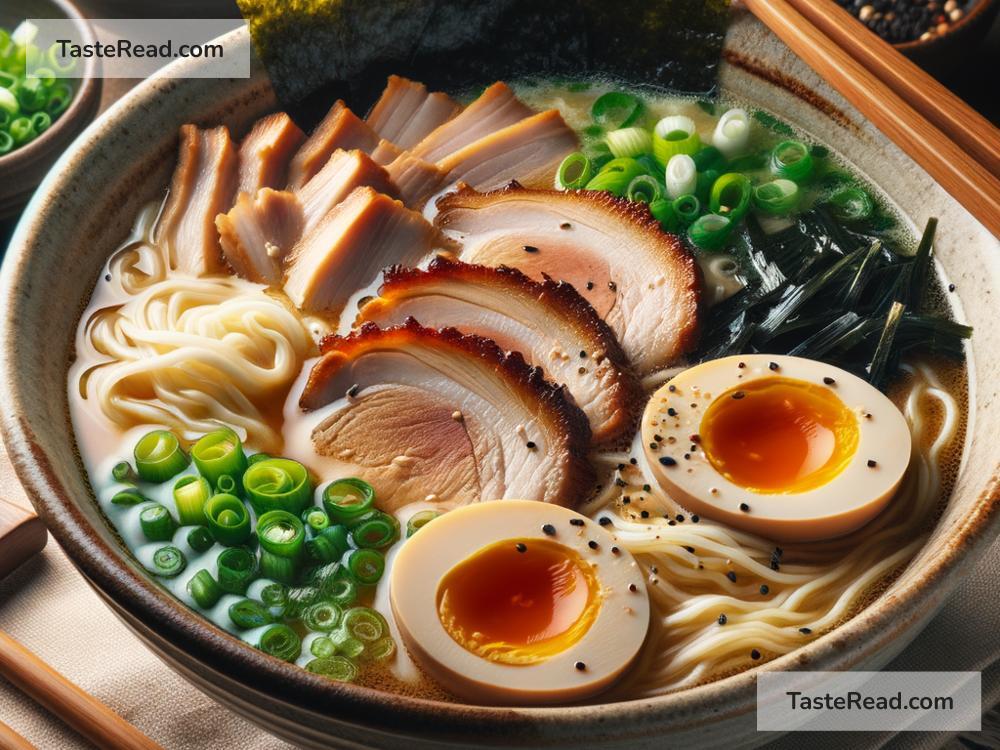The Evolution of Japanese Ramen: From China to Global Fame
Ramen is one of Japan’s most famous dishes, loved around the world. This savory noodle soup has a long and interesting history that reflects the changes in culture, tastes, and food trends. While ramen is now considered a symbol of Japanese cuisine, its origins are actually Chinese. Over the years, ramen evolved into something uniquely Japanese, and its journey is a story worth telling.
The Beginnings: Ramen’s Chinese Roots
Ramen first came to Japan in the late 19th century. It is believed that Chinese immigrants brought their noodles with them when Japan began opening its borders to trade and foreign cultures. The term “ramen” is thought to come from the Chinese word “lamian,” which means “pulled noodles.”
Early ramen wasn’t anything like the ramen we know today. It started as simple wheat noodles in a light broth, served by Chinese food stalls in port cities such as Yokohama. These stalls introduced Japanese people to a new way of eating noodles, different from the local soba and udon. Japanese diners were fascinated by the Chinese flavors, and ramen began gaining popularity.
Ramen’s Rise in Japan
By the 1910s and 1920s, ramen had started to spread across Japan. Japanese chefs began experimenting, combining Chinese techniques with local ingredients. Around this time, soy sauce became a key flavoring in ramen broth. This was one of the first steps in ramen evolving into a distinctly Japanese dish.
Ramen became even more popular during the 1940s, after World War II. Japan was struggling with food shortages, and American wheat flour was sent to the country as foreign aid. With plenty of wheat available, ramen shops began popping up everywhere, offering affordable meals for people trying to rebuild their lives. The combination of cheap noodles and flavorful broth made ramen a practical and comforting choice during tough times.
The Invention of Instant Ramen
In 1958, ramen’s history took a revolutionary turn. Momofuku Ando, the founder of Nissin Foods, invented instant ramen. He created a way to mass-produce dried noodles that could be rehydrated in hot water with a simple seasoning packet. The first flavor of instant ramen was chicken soup, called “Chikin Ramen.”
Instant ramen was affordable, convenient, and long-lasting. It became an instant hit not just in Japan but also overseas. People could now enjoy ramen at home without going to a shop, and its popularity skyrocketed. Over time, companies started producing instant ramen in a variety of flavors, and it became a global phenomenon. Today, instant ramen is a pantry staple in households all over the world.
Regional Variations of Ramen
As ramen gained more attention in Japan, regions began creating their own unique styles of the dish. This trend began in the 1960s and 70s with the rise of regional ramen shops. Each region developed its own take on ramen based on local ingredients and flavors.
For example, Sapporo, the capital of Hokkaido, became famous for miso ramen. The broth is made with fermented soybean paste and topped with corn, butter, and pork. Hakata, in Fukuoka Prefecture, introduced tonkotsu ramen, which has a rich, creamy pork-bone broth. Tokyo’s ramen is known for its shoyu (soy sauce) base, while Kitakata ramen focuses on thick, curly noodles in a light soy-based broth.
Today, Japan has more than 30 different regional ramen styles, each offering a unique taste experience. A single trip to Japan can feel like a ramen adventure, with every city and town offering something different.
Ramen Goes Global
By the 1980s and 90s, ramen shops began opening in cities like New York, Los Angeles, and London. Chefs from Japan brought their skills and recipes to share ramen with the world. These shops attracted newcomers as well as Japanese expatriates craving the taste of home.
In recent years, ramen has become a trendy dish in many countries. High-end ramen restaurants offer specialized bowls using premium ingredients, and chefs compete to create new and exciting flavors. Even instant ramen continues to evolve, with brands offering healthier options or bowls inspired by traditional regional styles.
Ramen festivals are now held all around the world, allowing people to try different types of ramen from Japan and beyond. What started as a humble noodle soup has become a global culinary star.
Why Ramen Matters Today
Ramen isn’t just food; it’s also a cultural symbol. It represents Japan’s ability to take inspiration from elsewhere and transform it into something unique. Ramen shows how food can connect people, whether it’s comforting a family in post-war Japan or sparking curiosity in diners around the globe.
Despite its rise to fame, ramen remains accessible to everyone. From casual street stalls to refined dining establishments, ramen can be enjoyed in countless ways. Its evolution from simple Chinese noodles to a celebrated Japanese dish reflects humanity’s creativity with food.
So, next time you savor a bowl of ramen, whether it’s instant noodles at home or a steaming bowl at a restaurant, take a moment to appreciate its rich history and journey. Ramen is more than just soup and noodles—it’s a dish with a story.
Which ramen style do you want to try next?


